
A vertical take-off and landing (VTOL) aircraft is one that can take off and land vertically without relying on a runway. This classification can include a variety of types of aircraft including helicopters as well as thrust-vectoring fixed-wing aircraft and other hybrid aircraft with powered rotors such as cyclogyros/cyclocopters and gyrodynes.

An autogyro, or gyroplane, is a class of rotorcraft that uses an unpowered rotor in free autorotation to develop lift. While similar to a helicopter rotor in appearance, the autogyro's unpowered rotor disc must have air flowing upward across it to make it rotate.

A gyrodyne is a type of VTOL aircraft with a helicopter rotor-like system that is driven by its engine for takeoff and landing only, and includes one or more conventional propeller or jet engines to provide forward thrust during cruising flight. During forward flight the rotor is unpowered and free-spinning, like an autogyro, and lift is provided by a combination of the rotor and conventional wings. The gyrodyne is one of a number of similar concepts which attempt to combine helicopter-like low-speed performance with conventional fixed-wing high-speeds, including tiltrotors and tiltwings.

A rotorcraft or rotary-wing aircraft is a heavier-than-air aircraft with rotary wings or rotor blades, which generate lift by rotating around a vertical mast. Several rotor blades mounted on a single mast are referred to as a rotor. The International Civil Aviation Organization (ICAO) defines a rotorcraft as "supported in flight by the reactions of the air on one or more rotors".
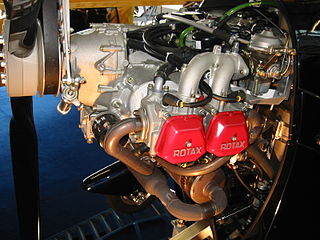
The Rotax 914 is a turbo-charged, four-stroke, four-cylinder, horizontally opposed aircraft engine with air-cooled cylinders and water-cooled cylinder heads. It is designed and built by the Austrian company BRP-Powertrain, owned by Bombardier Recreational Products (BRP), as part of its Rotax brand.

The RotorSport UK MT-03 is a two-seat autogyro manufactured to British Civil Airworthiness Requirements CAP643 Section T. New build-aircraft based on the AutoGyro MT-03 design are imported from Germany and completed to British regulations by RotorSport UK Limited in the United Kingdom.
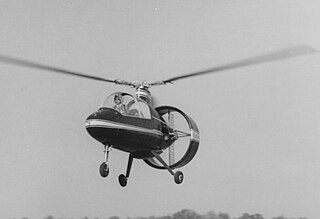
The Avian 2/180 Gyroplane was a two-seat, single-engine autogyro built in Canada in the 1960s. Several prototypes were built but production was not achieved.
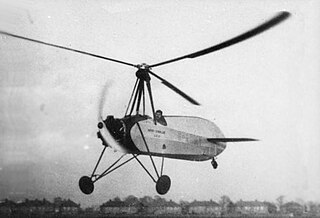
The Hafner A.R.III Gyroplane was a British 1930s experimental autogyro designed by Austrian Raoul Hafner, and built by the A.R.III Construction Company at Denham, Buckinghamshire.
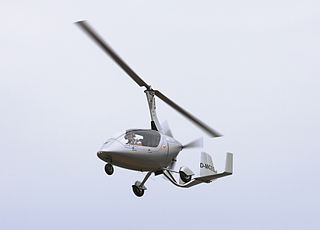
The RotorSport Calidus is a German tandem two-seater autogyro modified in the UK to meet British Civil Airworthiness Requirements CAP643 Section T. The Calidus is an enclosed-cockpit development of the open-cockpit RotorSport UK MT-03. New-build AutoGyro Calidus aircraft are imported from the manufacturers, AutoGyro GmbH in Hildeshem, Germany and completed to British regulations by RotorSport UK Ltd.

The AutoGyro Calidus is a German autogyro, designed and produced by AutoGyro GmbH of Hildesheim. The aircraft is supplied as a complete ready-to-fly-aircraft.
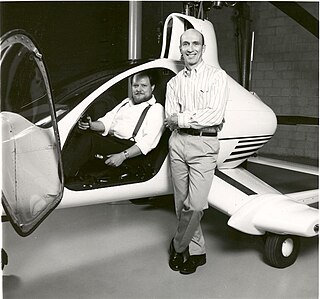
Skyworks Aeronautics Corp., formerly Groen Brothers Aviation, Inc., Groen Aeronautics Corporation and Skyworks Global, is an American autogyro research and development company based in Chicago. The company was founded in 1986 by David Groen and his late brother Jay Groen in Salt Lake City, Utah. David Groen remains as Senior Advisor.
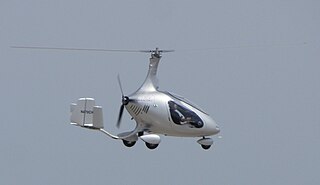
The Autogyro Cavalon is a German autogyro, designed and produced by AutoGyro GmbH of Hildesheim. It was introduced at the 2011 Aero show in Friedrichshafen. The aircraft is supplied as a complete ready-to-fly-aircraft.

The AutoGyro MT-03 is a German autogyro, designed and produced by AutoGyro GmbH of Hildesheim. The aircraft is supplied as a complete ready-to-fly-aircraft.

AutoGyro GmbH is a German aircraft manufacturer based in Hildesheim. The company specializes in the design and manufacture of autogyros in the form of fully assembled, ready to fly aircraft.

The Niki Lightning is a fully enclosed two-seater tricycle autogyro of composite construction, designed and built by Niki Rotor Aviation in Bulgaria. It was introduced in 2009

The AutoGyro eCavalon is a German single-seater electric powered autogyro introduced in 2013. The prototype is under development by AutoGyro GmbH of Hildesheim.

The Russian Gyroplanes Gyros-2 Smartflier is a Russian autogyro designed and produced by Russian Gyroplanes of Zhukovsky, Moscow Oblast. The aircraft is supplied complete and ready-to-fly.
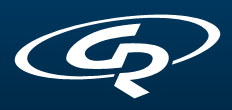
Russian Gyroplanes is a Russian aircraft manufacturer based in Zhukovsky, Moscow Oblast. The company specializes in the design and manufacture of autogyros in the form of ready-to-fly aircraft, as well as and hovercraft. The company was founded in 2007.


















